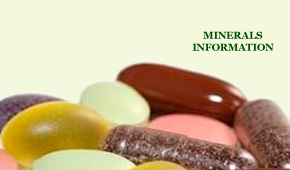ANGELICA
 Information
Information
Angelica archangelica, also known as Archangel is part of the Umbelliferae plant family. Angelica is a native of cold countries, Russia, and is believed to be native to Syria but is also found native to parts of Scotland. It also grows wild as far south as Germany, in many southern countries, Europe and has grown in Lapland and Iceland (since about 1568).
General Information
There are about 30 varieties of which only a few are used medicinally.
Botanical Name: Angelica archangelica, Angelica officinalis
Common Name: Archangel, European Angelica, Garden Angelica
Plant Family: Umbelliferae
History: There has been high praise since early times for Angelica as:
-a cure for almost every remedy
-a great blood purifier
-a remedy for poisons, agues (influenza) and all infectious diseases
-protection against all contagion
The herbalist Gerard stated: It cureth the bitings of mad dogs and all other venomous beasts.
Culpepper describes it as a herb of the Sun in Leo.
In Norway the roots were made into bread.
Plant Constituents of Angelica
Contains:
-a bitter principle
-angelic acid
-a resin, Angelicin (stimulating to the lungs and skin)
-astringents
-sugar
-valeric acid
-volatile oil (1%)
The Essential Oil of the Root:
-terebangelene
-terpene
The Oil from the Seeds:
-hydroxymyristic acid
-methyl-ethylacetic acid
-terebangelene
-terpene
Action:
-anti-bacterial [an agent that destroys bacteria; bactericide]
-anti-fungal [an agent that destroys fungal conditions]
-appetizer [an agent that excites the appetite]
-aromatic [a substance having an agreeable odor and stimulating qualities]
-carminative [an agent for easing griping pains, colic and expelling gas from the intestines]
-diaphoretic [an agent that promotes perspiration]
-diuretic [an agent that increases the volume and flow of urine which cleanses the urinary system]
-emmenagogue [an agent that promotes menstrual flow]
-expectorant [an agent that promotes the discharge of mucous and secretions from the respiratory passages]
-soothing
-stimulant [an agent that excites or quickens the functional activity of the tissues giving more energy]
-stomachic [an agent that strengthens, stimulates or tones the stomach]
-tonic [an agent that tones, strengthens and invigorates organs or the entire organism giving a feeling of well-being]
Usage of Angelica
According to one legend Angelica was revealed in a dream by an angel to cure the plague. It was held in such high esteem it was called The Root of the Holy Ghost.
Angelica has always been used for protection against the harmful influence of all conditions related to cold, damp climates.
Medicinal Part used: Roots, stems, leaves, seeds
Angelica was:
-grown in the garden as a protection for garden and home
-often used as a protective amulet [the root]
-used to banish evil by burning the leaves
-used to break spells and hexes by adding it to a ritual bath
-used to lengthen life, and for protection against diseases
-used to ward off evil spirits in the home
Angelica is commonly used for:
Brain and Nervous System Conditions
-nervous headache
Cardiovascular Conditions
-poor circulation
-promotes circulation and energy in the body
-stimulates and warms the circulation
Female Conditions
-expels afterbirth
-painful menstruation
-stimulates circulation in the pelvic region
-stimulates suppressed menstruation
Gastrointestinal Conditions
-colic, especially in children
-digestive difficulties
-eases flatulence (gas/wind)
-eases indigestion
-heartburn
-stimulates and warms the digestive system
-stimulates appetite
-stimulates digestion
-stomach and intestinal difficulties
-stomach cramps with vomiting
-stomach ulcers
-strengthens a weak stomach
Genitourinary Conditions
-ailments of the urinary organs
-gout
-stimulates kidney action
Immune System Conditions
-protects against disease
Inflammatory Conditions
-rheumatism
Liver Conditions
-hepatitis
-liver problems
Respiratory Tract Conditions
-ailments of the respiratory system
-breathing problems
-chronic bronchitis
-cold and damp in lung disease
-loosens phlegm in the lungs
-pleurisy
-relieves symptoms of colds
-soothes coughs
-sore throat
-stimulates and warms the lungs
Other
-fevers, especially intermittent
-general debility
-muscle spasms
-relieves pain
Externally the fresh leaves of Angelica have been used as a bath, poultice, compress for:
-eyes
-gout
-lung and chest diseases
-nerves
-relieving rheumatic pains
-scabies and itching
-sweat baths
Other Uses:
-confectionery (lollies, sweets, candies)
-flavoring of liqueurs, such as Chartreuse
-in Gin (with Juniper Berries)
-perfumes
-in the preparation of hop bitters (leaves)
-to sweeten tart fruit
Precautions
Caution:
Angelica should not be used by:
-diabetics (as it causes an increase of sugar in the urine)
-pregnant women
If taken in large doses Angelica can affect:
-blood pressure
-heart rate
-respiration
Drug Interactions:
Do not use Angelica without first talking to your practitioner or healthcare provider if you taking any of the following medications:
-None known
[AD]











